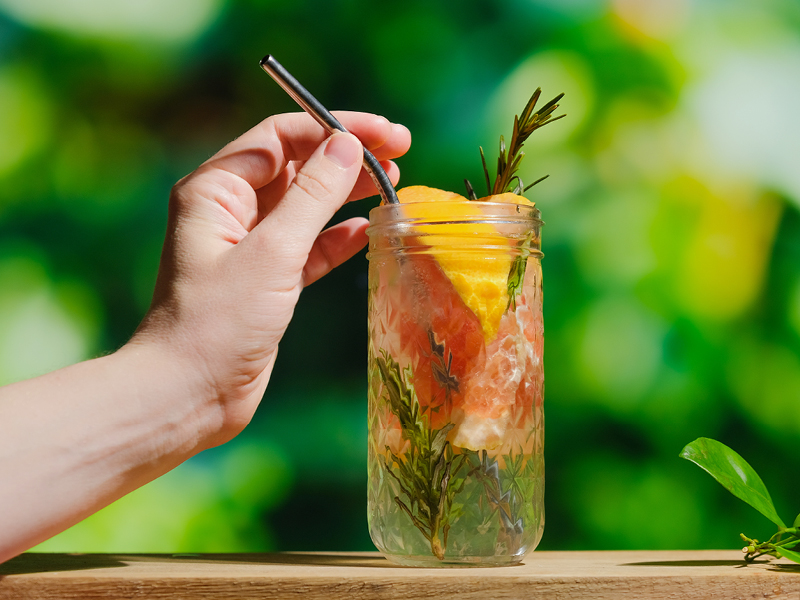
Demand for no and low products becoming ‘year round phenomenon’
The demand for no/low alcohol brands surged across key global markets in 2021, with consumer interest no longer confined to seasonal trends like Dry January.
This the main takeaway from the IWSR's latest Drinks Market Analysis report, which shows that the no and low global market reached a total value of almost US$10 Billion last year.
According to the study, no- and low-alcohol beer/cider, wine, spirits, and ready-to-drink (RTD) products grew by more than +6% in volume in 10 key global focus markets in 2021, and now commands a 3.5% volume share of the industry.
IWSR also forecasts that no/low alcohol will grow by +5.8% volume CAGR 2021-2025, and +8.5% value CAGR 2021-2025.
Among the 10 focus markets analysed in the study were Australia, France, Germany, Japan, South Africa, the UK, and the US. The IWSR's data revealed that Germany dominates the global no/low alcohol market by volume, followed by Spain, the US, Japan, and the UK.
“Volume of no and low alcohol products in Germany is more than three times that of the next largest no/low market, Spain. Both Germany and Spain clocked volume increases of about +2% in 2021, while the US grew by +31% and the UK by +17%. Total volume of no/low products in Japan registered a small decline (-1%) last year,” the report stated.
“While Germany and Spain are the larger and more mature markets for no/low alcohol, the UK and the US are two of the most dynamic ones, and are growing at a faster rate. The no/low alcohol segment in the US is forecast to grow by +28% volume CAGR 2021-2025, and the UK’s at +6,” it added.
Meanwhile, in the UK, total no/low alcohol volume grew by +16.7% in 2021. In the UK the category is driven by low-alcohol beer (which grew +7% in volume in 2021). No/low alcohol Spirits grew by more than 100% in volume (from a small base), and no/low alcohol wine grew by +47.3%.
Emily Neill, COO of IWSR Drinks Market Analysis, commented: “While January has become a popular month for people to cut back or abstain from alcohol, interest in no and low alcohol drinks has increasingly become a year-round trend among consumers across the world.”
“To meet that demand, beverage alcohol companies have invested heavily to introduce a number of innovative new products, and many established mainstream brands have recently crossed over to develop no/low alcohol versions of their popular beer, wines, and spirits.”
The report also indicated that no-alcohol was, overall, taking more market share away from traditional brands than low-alcohol. Beer/cider is the largest no/low category (at 75% volume share), with no-alcohol beer projected to drive growth at more than +11% CAGR over the study’s 2021-2025 forecast period.
Meanwhile, no-alcohol RTDs and no alcohol spirits are both expected to post about +14% CAGR volume growth.
However, the wine category is the exception to this rule, as the IWSR report shows that demand for low-alcohol brands is far higher than no-alcohol products, as the flavour profile is believed to be superior in the former segment.
“Low-alcohol wine is expected to grow almost +20% CAGR 2021-2025, vs. no-alcohol wine projected at +9% CAGR,” the IWSR report noted.
According to the new research, “43% of adults across the focus markets who have purchased no and low alcohol beverages say they are substituting those products in place of full-strength alcohol for certain occasions, rather than abstaining from alcohol overall. The country with the largest proportion of alcohol abstainers is the US, with 23% of no/low drinkers avoiding alcohol completely.”
Keywords:
- UK
- US
- Germany
- alcohol
- Low Alcohol
- market
- demand
- volume
- IWSR
- markets
- CAGR
- low
- products
- report
- drinks market analysis
- alcohol beer
- focus markets
- 2021 2025
- key global
- low alcohol beer
- cagr 2021 2025
- alcohol beer cider
- low alcohol brands
- ISWR






